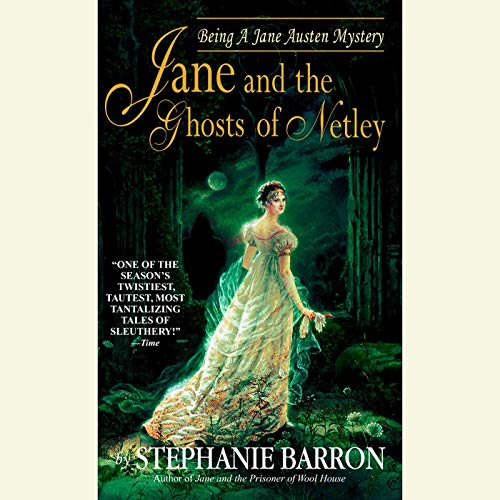While I don’t frequently read Jane Austen fan-fiction (a gross lapse in my community membership, I know), I will say that Barron’s murder-mysteries were the first I came across some twenty years ago while working at a bookstore during college, and they continue to be the ones I trun to when I need a fresh Austen fix and feel a little worn-out with re-reading her own original novels (you know, for the thirty-eigth time or whatever).
In this novel, we pick up in the year 1808 when Jane was living in Southhampton with her mother and Martha Lloyd. Her brother Frank Austen, the naval captain, was newly married to his wife Mary and the pair lived on the Isle of Wight with their small child. This novel also picks up shortly after the death of Edward Austen-Knight’s wife, and their two oldest sons are with their Aunt Jane in Southhampton, preparing to return to school despite the great mourning of all the family. In this novel, we are provided an exploration of the treatment of Catholics by both Parliament and everyday society. As you may or may not know, Catholicism since the time of Elizabeth I was seen as distinctly un-English (yes, despite the fact that there were a great many patriotic Englishmen and women who also happened to be Catholic). In fact, sentiment against Catholics was so strong that Parliament passed bills making it impossible for a Catholic to succeed to the throne, or for a member of the royal family to marry a Catholic (at least marry and remain in the line of succession. You may be aware that part of Edward VII’s need to abdicate was that Wallace Simpson was divorced AND a Catholic.). We are also provided a glimpse of Maria Fitzherbert, mistress to George IV while still in the Regency portion of his reign. In fact, George IV married Maria Fitzherbert in a private ceremony which was later hushed up because she was… you guessed it… Catholic. Don’t ask me how this works, but because Parliament would not acknowledge her as his wife, George was later able to marry Charlotte of Brunswick. How was this not bigamy?? I really don’t know. A particularly delightful component of Barron’s novel are the descriptions of Southhampton’s coast line, wharves, and the ruins of Netley Abbey. As with any successful murder-mystery, all is not as it seems and Jane remains at the center of the mystery as more bodies turn up amidst political unrest and upheaval. Best – or perhaps worst?? – of all is the love scene between Jane and Lord Harold Trowbridge, a frequent fixture of previous mysteries, but of course, as anyone who knows anything of Austen must realize, it is not to be a declaration without its costs. All in all, another delightful romp into the “long lost” journals of Miss Austen. The writing is authentic and well-researched, with delightful easter eggs of lines and plot points from Austen’s novels for Janeites to discover. Thank you again, Madame Barron. Now on to number 8!


Leave a comment